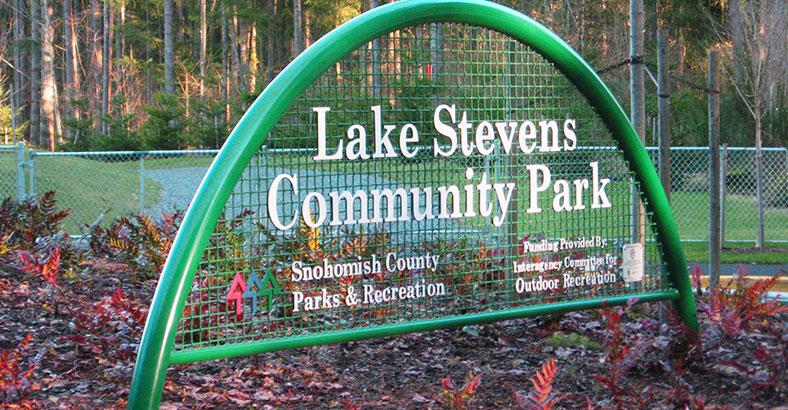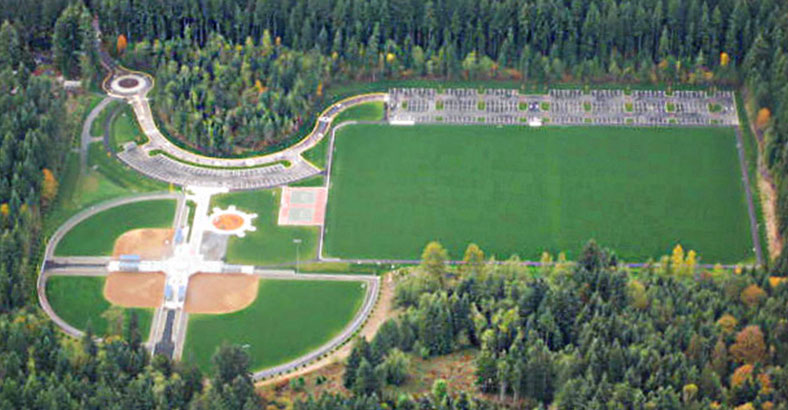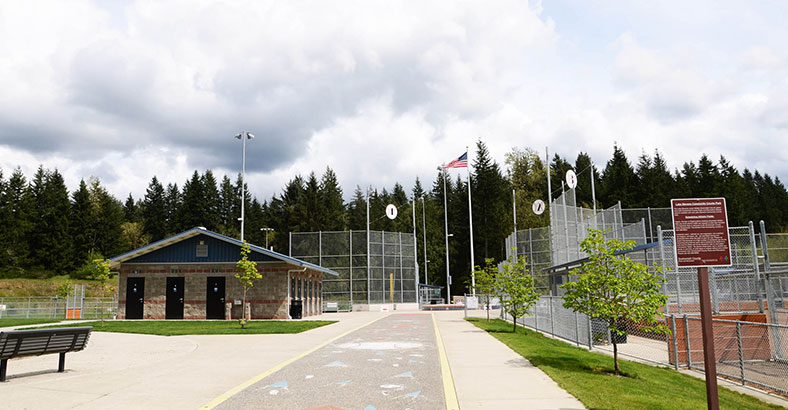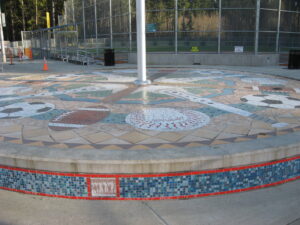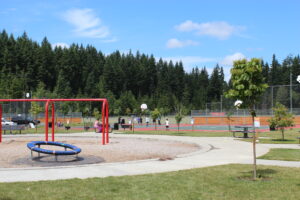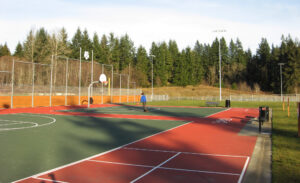Lake Stevens Community Park
Lake Stevens Community Park
Lake Stevens Community Park is a 40-acre site that used to be an old homestead and timber-harvesting site. Bruce Dees & Associates was hired to create a plan for this large community park that preserved and enhanced the site for the surrounding community.
Preserving Habitat
This site is located next to a significant wetland with vital native habitats that BDA was focused on maintaining and improving the site through stormwater management. There was a mandate for on-site infiltration due to the location and proximity to sensitive ecosystems. The sports fields were under drained to provide good drainage year-round, water would percolate and be filtered through the sand to prevent nutrient runoff on the fields. That filtered and clean water is then directed to the wetland at a metered rate to sustain the wetland at the optimum water level. Other stormwater features include infiltration via bioswales in the parking lot and the use of pervious asphalt pavement for surfacing the perimeter trail on site.
Public Art
The county retained artist Glen Anderson to work on thematic sports art for the site. The ballfield complex entry follows a 200’ long walkway that incorporates thematic sports art into the concrete. These artistic elements enhance the site for visitors on the site extending along the pathway and onto the flagpole.
Site Features
Grading on the site was designed to attain flat surfaces for playing fields while preserving the topographic and vegetative character of the site. BDA focused on utilizing earthwork to make the space operate and drain properly for the longevity of the site. All of the paved paths on the site are ADA compliant and connect to the park facilities. This site features a looping path, a children’s play area, picnicking, parking, and access to three natural grass ballfields, four natural grass soccer/multi-use fields, basketball half courts, and a restroom/concession building.

